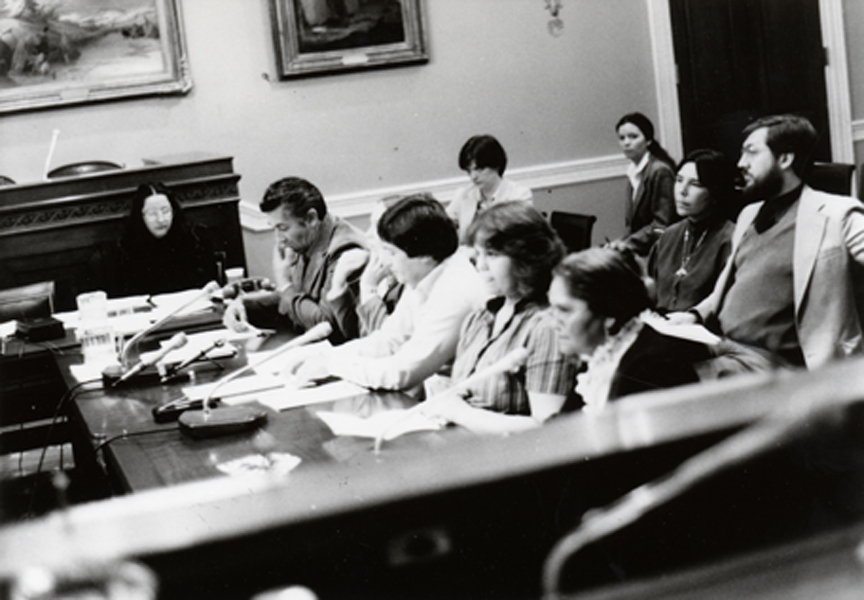Kathryn, Karen, and Frank Harrison, seated in the front row, testify for Congressional restoration of the Grand Ronde tribe. Elizabeth Furse, an Indian-rights advocate who later became a member of the U.S. House of Representatives, is seated in the back corner.
On September 14, 1983, Representative Les AuCoin introduced the Grand Ronde Restoration Bill to Congress. After Congress had passed the Termination Act in 1954, the federal government terminated 109 tribes or bands, meaning that the people who were members of those tribes or bands lost any reservation land they had and all legal status as Indian people. Sixty-two of the terminated tribes were native to Oregon. During the 1970s, however, many tribal people regained legal control over their education and futures. Congress restored federal recognition to the Menominee Indian Tribe of Wisconsin in 1973 and passed the Indian Self-Determination Act in 1975.
Restoration did not always mean that tribes regained land, but it did allow tribes to establish policies of self-governance and to exercise sovereignty in their dealings with other governments. Restoration also gave tribal members a more grounded sense of identity. At a hearing for the Grand Ronde Restoration bill, sixteen-year-old Karen Harrison (second from right in the photograph above) said: "All my life, I have only known termination. People ask me what tribe I am, and when I tell them, they've never heard of it. That, in itself, would mean a lot to me: for people to know that I am part of the Molalla Tribe of the Grand Rondes, and how proud I am to be a member of my tribe."
In Oregon, six tribes have won restoration from Congress: Confederated Tribes of the Siletz (1977); Cow Creek Band of Umpqua Indians (1982); Confederated Tribes of the Grand Ronde (1983); Confederated Tribes of Coos, Lower Umpqua, and Siuslaw Indians (1984); Klamath Indian Tribes (1986); and Coquille Indian Tribe (1989).
Further reading:
Kristine Olson, Standing Tall: The Lifeway of Kathryn Jones Harrison, Chair of the Confederated Tribes of the Grand Ronde Community (Portland, Ore.: Oregon Historical Society Press, 2006).
Charles Wilkinson, Blood Struggle: The Rise of Modern Indian Nations (New York: Norton, 2005).
Written by Eliza Canty-Jones © Oregon Historical Society, 2007.
